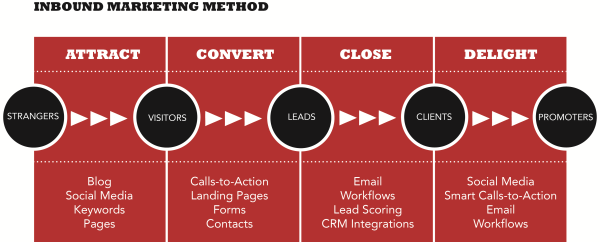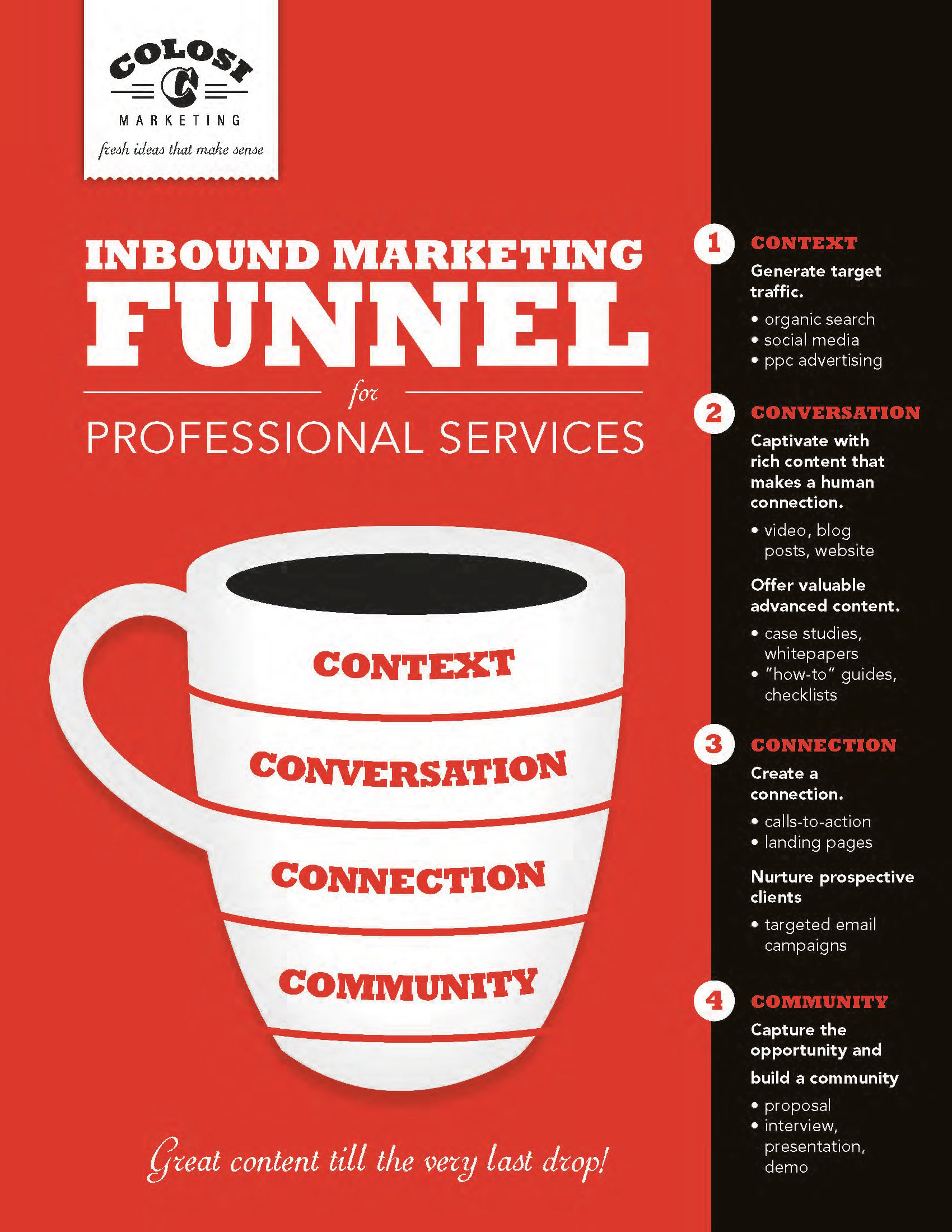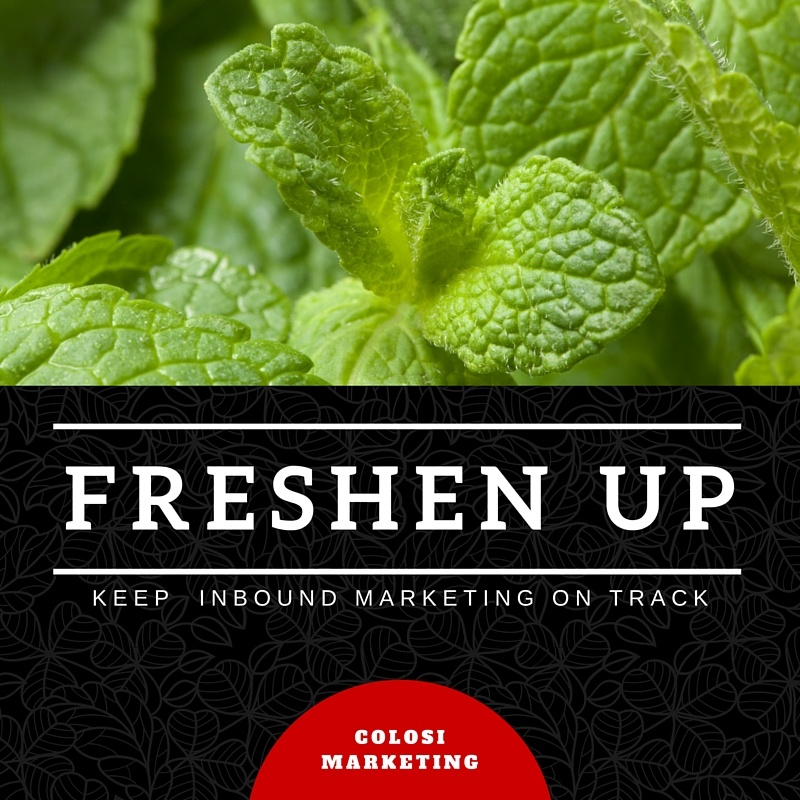Inbound Marketing Workflow for Professional Services Firms
Inbound marketing aims to create content people love.
What does that mean? Create content people love? To understand this concept, I'd like you to refer to the inbound marketing workflow provided below. This workflow aims to provide insight into how to apply resources to implement these methods. It is also a tool for making greater strides in nurturing relationships that align with meeting a firm's business goals.
The inbound marketing lifecycle stages include: (1) attracting visitors, (2) converting leads, (3) closing clients, then (4) delighting communities. These stages bring together tools that continuously allow you to create and deliver content that will attract the right visitors at the right place and time.

(Source: Inbound Marketing Workflow, Source: HubSpot)
When your team has a workflow as a reference, you have a shared understanding of the inbound marketing activities at each stage. In effect, this information will help your marketing team work through the activities and have a creative exchange about how to energize both your digital and traditional marketing efforts.
Stage One: Attract
Many professional services firms have gorgeous websites. Now that you have a great website, it is time to attract the right visitors. The right visitors will likely become leads and, then, satisfied clients.
First, it is important to identify "who" are the right visitors. To determine "who"," a fi" needs to understand the characteristics of its ideal client. A client profile must describe these characteristics covering a group's behaviors, unique needs, challenges, objections to services, and demographic information. Every professional services firm caters to a few client profiles. To attract clients, the professional services marketer uses the following tools:
- Blogging: A blog is the best method for attracting new leads and getting found by the right visitors. The blog is a forum for providing educational content that speaks directly to your target audiences.
- Social Media: To attract more audiences, you must share your content through social media channels that will engage your communities and provide a friendly, meaningful message that will build your brand.
- Keywords: Your clients perform a due diligence effort online to find firms that meet their criteria for licensed professionals, service offerings, and relevant experience. So, it's important to incorporate keywords into your content and apply a search engine optimization (SEO) strategy to ensure the right visitors find your firm.
- Pages: Your website needs to be able to attract the right visitors. These pages should offer fresh content that keeps visitors returning to your site.
Stage Two: Convert
When a visitor arrives at your site, it's up to you to convert these visitors into leads by telling them to give their contact information willingly. The professional services marketer can convince visitors to take this step if they provide something in exchange. This exchange is in the form of content, like a tip sheet, ebook, diagram, spreadsheet – whatever information interests your prospective clients. The following tools help you turn a site visitor into a lead:
- Call-to-Action: A call-to-action is a "button" or link that encourages your visitors to take action, for example, "download our checklist" or "attend our webinar."
- Landing Pages: When visitors click on a call-to-action, they will be sent to a landing page to fulfill the exchange.
- Forms: When a visitor ends up on a landing page, they fill out a form in exchange for the desired content. Once visitors provide their contact information, they become leads.
- Contacts: Upon conversion, it is time to track them in a single database that allows you to analyze your interactions. Once you understand your interactions, you have the information needed to optimize your future exchanges to attract, convert, close, and delight your clients more effectively.
Stage Three: Close
You have your visitors' attention and actively convert the right leads. Now you'll need to turn these leads into clients. The following set of marketing tools helps you close the right leads at the right times:
- Email: Once your visitor becomes a lead, targeted emails that provide insightful, relevant content can build trust with a prospect and prepare them to take the next step.
- Marketing Automation: Marketing automation requires creating a series of email marketing messages tailored towards each lead's specific needs and stage. For example, if a visitor downloaded a checklist about a certain topic, you may choose to send a series of related emails over some time on a related subject.
- Lead Scoring: Once you have contacts in the system, you must determine the right time for a business developer or executive to engage. Create a numerical rating system for leads to trigger when it is right.
- CRM Integration: Determine how well your marketing and business development personnel are working to ensure leads are closing by integrating a client relationship management (CRM) solution that provides the reporting you need to determine efficacy.
Stage Four: Delight
As you can see, inbound marketing practices deliver content audiences love. Whether they are visitors, leads, or clients, it is up to professional services marketers to ensure they remember your firm. You aim to engage and delight and, hopefully, further nurture client relationships so they are willing promoters of your firm and its professional staff. Inbound marketing tools that aim to delight your clients include:
- Social Media: Using a range of social media channels will allow you to provide real-time client service.
- Smart Calls-to-Action: Smart calls-to-action present different visitors with offers that change based on their client profile and lifecycle stage.
- Email and Marketing Automation: These tools provide your clients with continued content that keeps them excited and engaged. They also allow you to introduce new services and information that may be of direct interest to them.
Now, you have an inbound marketing workflow outlining the activities and tools used at each stage to transform a stranger into a client. Hopefully, these practices inspire you to develop new and exciting content to help build your firm's business.



